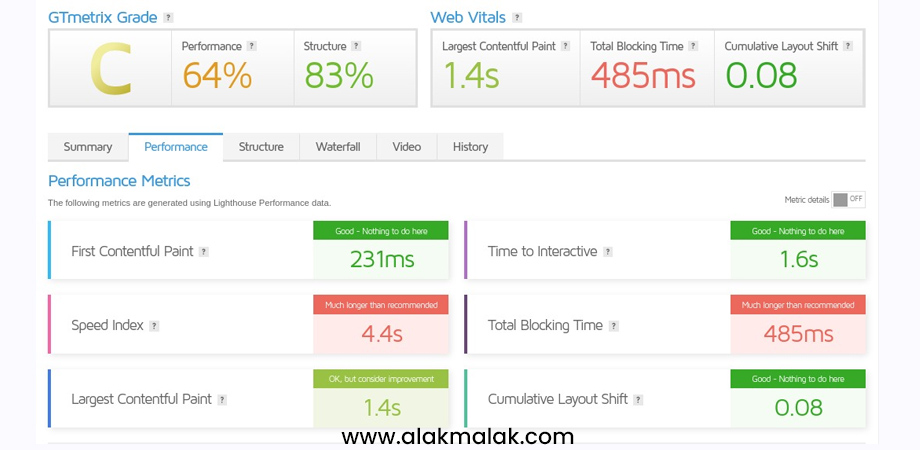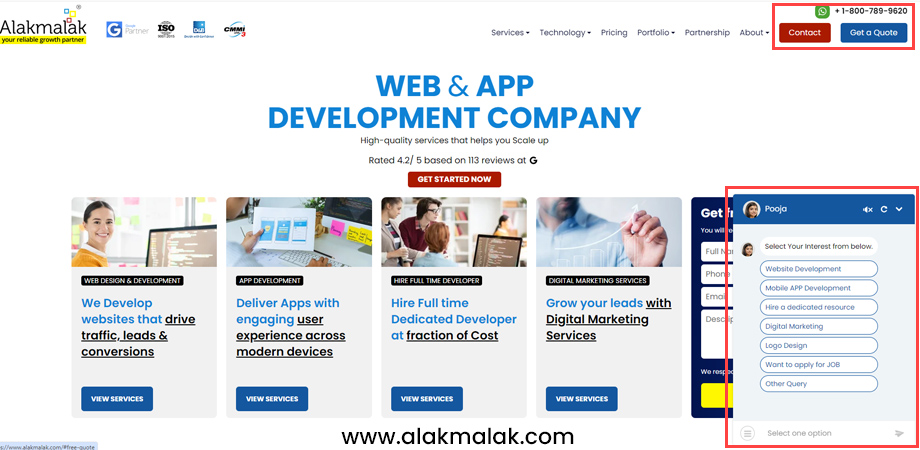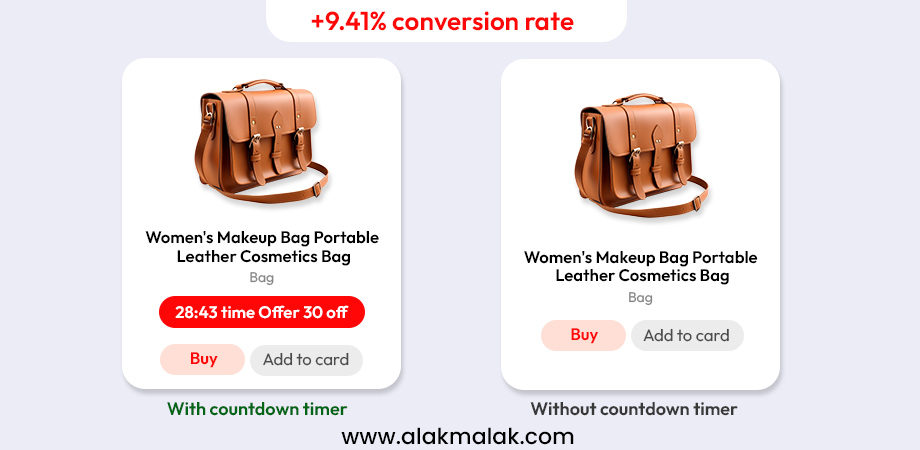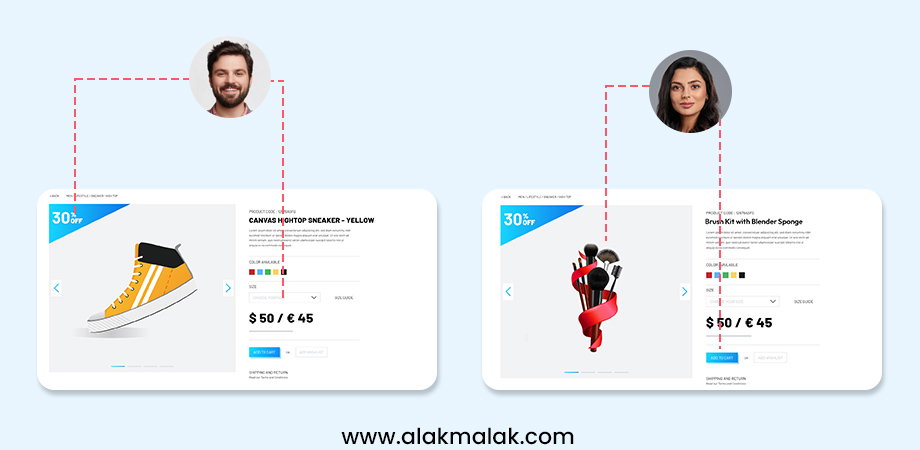In today’s competitive digital landscape, having an eye-catching website is no longer enough to attract and convert potential customers. In fact, research shows that a staggering 96% of visitors who land on your website are not ready to make a purchase. The harsh reality is that even the most visually stunning websites often struggle to translate that initial interest into actual sales and revenue.
The problem lies in the optimization of your landing pages – the critical entry points where you have the best chance of turning a curious browser into a paying customer. Effectively designing and optimizing your landing pages is the key to unlocking the true potential of your online presence and driving meaningful business growth.
As a leading Website Design Company India with over 18 years of experience, we’ve seen firsthand the challenges that businesses face in converting website visitors into loyal, paying customers.
In this blog post, I’m going to share with you a treasure trove of essential web design tactics that have been proven to increase conversions and enhance the overall user experience on your site. By the time you’re done reading, you’ll be armed with the knowledge and tools needed to transform your website into a lead-generating, sales-driving machine. So, let’s dive in and unlock the secret to turning more of your visitors into loyal, paying customers.
Essential Web Design Tactics
Let’s consider some essential web design tactics to convert visitors to customers:-
1. Craft Compelling CTAs (Calls to Action):
Effective calls-to-action (CTAs) buttons are the backbone of any successful website. These strategic prompts guide your visitors to take the desired actions, whether that’s making a purchase, signing up for a newsletter, or requesting a consultation. Crafting compelling CTAs is essential for converting casual browsers into paying customers.
The Power of Persuasive CTAs
Your CTAs are often the final step in the conversion funnel, making them critical for driving tangible business results. Research shows that websites with relevant CTAs see 202% more conversions than those without. Failing to optimize your CTAs can mean leaving a significant amount of revenue on the table.
Beyond boosting conversions, strong CTAs also play a vital role in shaping the overall user experience. Clear, captivating CTAs help visitors navigate your site with confidence, guiding them seamlessly towards their desired outcomes.
Implementing Irresistible CTAs
- To create CTAs that inspire action:
- Use action-oriented language that speaks directly to your audience’s needs and pain points
- Keep your CTAs concise and scannable, with a clear value proposition
- Leverage contrasting colors and strategic placement to make your CTAs visually striking
- Optimize your CTAs for mobile, ensuring they’re easy to tap and interact with on smaller screens
- A/B test different CTA variations to identify the highest-performing elements
According to a study by Unbounce, businesses that continuously optimize their CTAs see an average 90% lift in conversions. By investing the time and effort to craft irresistible CTAs, you can transform your website into a conversion powerhouse.
2. Build Trust and Credibility:
In today’s competitive digital landscape, earning the trust and confidence of your website visitors is crucial for driving conversions and cultivating loyal customers. Credibility signals like social proof, customer testimonials, and industry certifications can make the difference between a visitor becoming a paying customer or abandoning your site entirely.
The Importance of Building Trust
Trust is the foundation of any successful business relationship, and your website is no exception. Customers are increasingly wary of online scams and deception, and they want to feel confident that your business is legitimate, reputable, and committed to delivering on its promises.
In fact, research shows that 81% of consumers won’t engage with a brand they don’t trust. Without a strong foundation of credibility, your website will struggle to convert visitors, regardless of how polished or user-friendly it may be.
Implementing Credibility-Building Tactics
To build trust and credibility on your website:
- Prominently display customer reviews, ratings, and testimonials
- Showcase industry awards, certifications, and media mentions you’ve received
- Introduce your team with professional bios and headshots
- Provide a physical business address, phone number, and other contact information
- Highlight your company’s history, mission, and values
- Ensure your website’s security is up-to-date with HTTPS encryption and privacy policies
- Partner with reputable brands, influencers, or industry leaders to gain an endorsement
According to a study by Baymard Institute, 61% of consumers won’t engage with a brand that doesn’t have a privacy policy. By strategically incorporating trust-building elements, you can create a website that resonates with your audience and drives more meaningful conversions.
3. Prioritize User Experience (UX)
In the highly competitive world of online business, partnering with a top-tier UI/UX Design Agency is no longer a luxury – it’s a strategic imperative. Delivering an exceptional user experience (UX) is no longer a nice-to-have; it’s a non-negotiable requirement. A website that prioritizes intuitive navigation, responsive design, and seamless interactions, crafted by a proficient UI/UX Design Agency, will not only delight visitors but also drive higher engagement, conversions, and long-term customer loyalty.
The Business Impact of Great UX
A positive user experience is directly linked to tangible business outcomes. Websites that offer a frictionless, user-friendly journey see significantly higher conversion rates, lower bounce rates, and stronger brand loyalty compared to their counterparts with subpar UX.
In fact, research shows that 88% of online consumers are less likely to return to a website after a bad experience. Given the abundance of choice available to today’s digital-savvy customers, providing a delightful UX can make the difference between attracting new business and watching potential customers flock to your competitors.
Implementing Effective UX Strategies
To optimize your website’s user experience:
- Conduct user research to deeply understand your audience’s needs, pain points, and behaviors
- Ensure your site is mobile-responsive, with a design that seamlessly adapts to any device
- Streamline your navigation, with clear, intuitive menu structures and prominent search functionality
- Leverage ample whitespace, readable typography, and high-quality visuals to create a clean, uncluttered aesthetic
- Implement interactive elements like animations, hover effects, and micro-interactions to engage visitors
- Continuously test and iterate your UX based on user feedback and performance data
According to a study by the Nielsen Norman Group, websites that prioritize UX see 60% higher conversion rates compared to those that don’t. By making user experience a central focus of your web design strategy, you can position your business for long-term success in the digital landscape.
4. Focus on Website Clarity and Content Value
In today’s attention-deficit digital landscape, capturing and holding your audience’s interest is a constant challenge. To convert website visitors into paying customers, you must not only create a user-friendly, visually appealing design – you also need to ensure your content is clear, compelling, and genuinely valuable to your target audience.
The Importance of Clarity and Value
Visitors to your website are seeking information, solutions, or products that will address their specific needs and pain points. If your content fails to communicate this value proposition clearly and concisely, you risk losing their interest and, ultimately, their business.
Research shows that websites with clear, benefit-driven content see 86% higher conversion rates compared to those that don’t effectively showcase their offerings. Conversely, cluttered, jargon-filled pages that don’t speak directly to the user’s needs can quickly drive them to your competitors.
Implementing Clarity and Value
To ensure your website content delivers both clarity and genuine value:
- Clearly define your unique value proposition and communicate it prominently on your homepage and key landing pages
- Use simple, conversational language that resonates with your target audience, avoiding technical jargon or industry-specific terminology
- Organize your content in a logical, easy-to-navigate structure, with clear headings and subheadings that guide the user’s journey
- Provide in-depth, informative content that addresses your audience’s most pressing questions and concerns
- Incorporate relevant, high-quality visuals that complement and enhance your written content
- Regularly solicit feedback from your customers to identify areas for improvement and better understand their needs
According to a study by the Nielsen Norman Group, websites that excel at content clarity and value see 400% higher conversion rates. By placing these elements at the heart of your web design strategy, you can create a digital presence that captivates your audience and drives meaningful business results.
5. Speed is King: Optimize for Performance:
In the fast-paced world of online business, website speed and performance are critical factors in determining user experience and, ultimately, conversion rates. Visitors to your site have little patience for slow-loading pages, and they’ll quickly abandon your website in favor of a faster-performing competitor if you fail to prioritize optimization.
The Need for Speed
Website speed has a direct and significant impact on key business metrics. Studies show that a mere 1-second delay in page load time can result in a 7% reduction in conversions. For e-commerce businesses, this can translate to substantial lost revenue and missed opportunities.
Beyond the impact on conversions, slow website performance can also negatively affect your search engine rankings, making it harder for potential customers to even find your business online. Google and other search engines now use site speed as a ranking factor, prioritizing faster-loading websites over their sluggish counterparts.
Implementing Performance Optimization
To ensure your website loads lightning-fast and delivers an exceptional user experience:
- Optimize all images, videos, and other media files by compressing their file sizes without compromising quality
- Leverage browser caching to reduce the need for full page reloads on repeat visits
- Consider using a content delivery network (CDN) to serve static assets from servers closest to each individual user
- Minimize the use of unnecessary plugins, scripts, and other third-party resources that can slow down page load times
- Regularly test your website’s speed and performance using tools like Google PageSpeed Insights, and address any identified issues
- Ensure your website is mobile-optimized, with a responsive design that provides a seamless experience on any device
According to a study by Portent, a 1-second improvement in page load time can lift conversion rates by 2%. By making website speed a top priority, you can create a digital presence that captivates your audience and drives meaningful business results.
6. High-Quality Visuals:
In today’s visually-driven digital landscape, the strategic use of high-quality imagery, graphics, and multimedia can make all the difference in captivating your website visitors and driving them to take desired actions. From showcasing your products to visually conveying your brand’s story, impactful visuals are a crucial element of any conversion-focused web design strategy.
The Power of Visuals
Research shows that web pages with relevant images see 94% more views than those without any visuals. Engaging, high-quality visuals have an unparalleled ability to grab users’ attention, communicate complex ideas, and forge emotional connections – all of which can translate into higher levels of engagement, increased dwell time, and more meaningful conversions.
For businesses, leveraging visuals effectively can be a game-changer. Websites that feature compelling imagery, informative videos, and eye-catching infographics tend to see significantly better performance metrics across the board, from lower bounce rates to higher click-through and purchase rates.
Implementing Visually-Driven Design
To incorporate high-impact visuals into your website:
- Use professional-grade, high-resolution images that are relevant, visually appealing, and aligned with your brand’s aesthetic
- Incorporate informative, engaging videos that educate, entertain, or inspire your target audience
- Create custom graphics, illustrations, and data visualizations to convey complex information in a digestible, visually-driven format
- Optimize all visual assets for fast loading times and seamless performance across devices
- Test different visual elements and layouts to identify what resonates most with your audience
- Ensure your visuals complement and enhance your written content, rather than distracting from it
According to a study by Forrester Research, web pages with videos are 53 times more likely to appear on the first page of search engine results. By making visuals a central component of your web design strategy, you can create a digital presence that captivates your audience and drives measurable business results.
7. Make Contact Easy:
In today’s fast-paced, digital-first world, making it easy for website visitors to reach out and connect with your business is a critical component of any successful web design strategy. Whether a potential customer has a question, needs support, or is ready to make a purchase, providing clear, prominent contact options can mean the difference between a converted lead and a missed opportunity.
The Importance of Accessible Contact
By making your contact information easily accessible and intuitive to find, you demonstrate your commitment to customer service and create a positive, user-friendly experience. Conversely, burying your contact details or making it difficult for visitors to get in touch can erode trust, frustrate potential customers, and drive them straight into the arms of your competitors.
In fact, research shows that websites with clear, prominent contact options see 25% higher conversion rates compared to those with less accessible contact information. Making it easy for your audience to get in touch is not only good customer service – it’s also a proven path to driving more sales and cultivating lasting relationships.
Implementing Accessible Contact
To ensure your website’s contact options are easy to find and use:
- Place your contact information (phone number, email address, physical address, etc.) in the header or footer of every page
- Include a dedicated “Contact Us” page that provides multiple ways for visitors to get in touch, such as a contact form, live chat, or click-to-call functionality
- Make your contact options mobile-friendly, with tap-to-call and tap-to-email features for seamless interactions on the go
- Provide clear instructions and expectations around response times to set realistic customer service standards
- Monitor your contact channels closely and respond to inquiries in a timely, professional manner
- Continuously test and refine your contact options based on user feedback and conversion data
According to a study by Econsultancy, websites that make it easy for visitors to get in touch see 3 times higher customer satisfaction rates. By prioritizing accessible, user-friendly contact options, you can create a digital experience that establishes trust, fosters engagement, and drives more valuable conversions.
8. Embrace User-Generated Content (UGC):
In today’s social media-driven world, user-generated content (UGC) has emerged as a powerful tool for building trust, boosting engagement, and driving conversions on business websites. From customer reviews and testimonials to social media posts and user-created media, leveraging the authentic voice of your audience, with the expertise of a proficient website development company, can be a game-changer for your web design strategy.
The Power of User-Generated Content
Potential customers are increasingly skeptical of traditional marketing tactics and prefer to seek out real, unbiased opinions from their peers. UGC provides social proof that can significantly impact purchasing decisions, with 93% of consumers reporting that user-generated content influences their buying behavior.
Beyond its influence on conversions, UGC can also help to improve overall website engagement, brand loyalty, and search engine visibility. Websites that prominently feature user-generated content see 29% higher click-through rates and 4.6% higher conversion rates compared to those that don’t.
Incorporating UGC into Your Website
To effectively leverage user-generated content on your website:
- Encourage customers to leave reviews, ratings, and testimonials about their experiences with your products or services
- Curate and showcase user-generated photos, videos, and social media posts that showcase your brand in a positive light
- Integrate a user-generated content hub or gallery that aggregates and displays all your brand’s UGC in one centralized location
- Actively monitor and respond to user-generated content to demonstrate your commitment to customer engagement
- Incentivize and reward user participation through contests, giveaways, or other campaigns that promote content creation
- Optimize your UGC for search engine visibility by incorporating relevant keywords and schema markup
According to a study by Bazaarvoice, websites that prominently feature user-generated content see a 166% increase in conversion rates. By embracing the power of UGC, you can create a more authentic, engaging, and conversion-driving digital presence.
9. Integrate A/B Testing:
In the dynamic and ever-evolving world of web design, continuously testing and optimizing your website is essential for driving conversions and maximizing your return on investment. A/B testing, the practice of comparing two versions of a web page to determine which one performs better, is a powerful tool that allows you to make data-driven decisions and continually refine your digital presence.
The Importance of A/B Testing
Without A/B testing, you’re essentially relying on guesswork and assumptions when it comes to the design and content of your website. However, what may seem like an intuitive or visually appealing change to your page could, in reality, have a negative impact on user engagement and conversions.
A/B testing enables you to test hypotheses and measure the real-world impact of your design decisions. Research shows that businesses that implement A/B testing see an average 60% increase in conversions compared to those who don’t. The ability to identify and implement high-performing elements can have a significant and measurable impact on your bottom line.
Implementing A/B Testing
To incorporate A/B testing into your web design strategy:
- Identify key pages or elements on your website that have the greatest potential to impact conversions, such as your homepage, product pages, or calls-to-action
- Develop hypotheses about how changes to these elements might improve user experience and drive more conversions
- Use A/B testing tools like Google Optimize, Optimizely, or Adobe Target to create and deploy different variations of the selected page or element
- Gather and analyze the performance data for each variation, comparing metrics like click-through rates, form submissions, and overall conversions
- Implement the higher-performing variation and continue testing new ideas to drive ongoing optimization
According to a study by Unbounce, businesses that consistently test and optimize their websites see a 113% increase in lead generation. By making A/B testing a core part of your web design process, you can create a dynamic, conversion-focused digital presence that adapts to the evolving needs and behaviors of your audience.
10. Personalize the Experience:
In today’s hyper-competitive online landscape, delivering a seamless, personalized user experience is no longer a nice-to-have – it’s a necessity for driving conversions and cultivating loyal customers. By tailoring your website’s content, recommendations, and interactions to the unique needs and preferences of each individual visitor, you can create a digital experience that stands out from the crowd and keeps your audience engaged.
The Power of Personalization
Personalization is a powerful tool for building stronger, more valuable relationships with your customers. Websites that offer personalized experiences see 19% higher customer satisfaction rates and 14% higher conversion rates compared to those that don’t.
When visitors feel that your website truly understands and caters to their specific needs, they’re far more likely to engage, convert, and become loyal brand advocates. Conversely, a one-size-fits-all approach can quickly lead to frustration, disengagement, and lost business opportunities.
Implementing Personalization
To incorporate personalization into your web design strategy:
- Leverage user data, browsing history, and past interactions to dynamically tailor content, product recommendations, and calls-to-action
- Customize the user interface and navigation based on each visitor’s device, location, interests, and purchase history
- Provide personalized greetings, offers, and recommendations based on the user’s profile and previous activity on your site
- Use advanced personalization tools and technologies, such as machine learning and predictive analytics, to continuously optimize and refine your personalization efforts
- Integrate your website with a customer relationship management (CRM) system to unify user data and enable more sophisticated personalization
- Regularly test and iterate your personalization strategies to ensure you’re delivering the most relevant and impactful experiences
According to a study by Epsilon, 80% of consumers are more likely to do business with a company that offers personalized experiences. By making personalization a core component of your web design strategy, you can create a digital presence that truly resonates with your audience and drives sustainable business growth.
11. SEO Optimization
In the digital age, where competition for online visibility is fiercer than ever, ensuring your website is optimized for search engine success is a critical component of any effective web design strategy. By incorporating SEO best practices into the very foundation of your site, you can improve your search rankings, drive more qualified traffic, and ultimately convert those visitors into loyal, paying customers.
The Importance of SEO Optimization
Search engine optimization (SEO) plays a pivotal role in determining the online discoverability and success of your business. Research shows that the top three search results on Google account for over 75% of all clicks, meaning that if your website isn’t ranking near the top, you’re missing out on a substantial portion of your potential customer base.
Beyond driving more targeted traffic to your site, SEO optimization can also have a direct impact on conversions. Websites that appear higher in search engine results see 25% higher conversion rates compared to those that rank lower. By making your site more visible and accessible to your target audience, you can position your business for long-term growth and profitability.
Implementing SEO Optimization
To optimize your website for search engine success:
- Conduct thorough keyword research to identify the terms and phrases your target audience is using to find businesses like yours
- Incorporate those keywords strategically throughout your website’s content, including page titles, meta descriptions, headings, and body copy
- Ensure your website’s technical foundation is sound, with fast loading times, mobile-responsiveness, and a clean, crawlable structure
- Leverage schema markup and other structured data to provide search engines with additional context about your website’s content
- Build a portfolio of high-quality, relevant backlinks to signal to search engines that your site is an authoritative and trustworthy source
- Monitor your website’s search performance and rankings using tools like Google Search Console, and continually refine your SEO strategy based on the data
According to a study by Backlinko, websites that implement comprehensive SEO optimization see a 124% increase in traffic from search engines. By making SEO a core component of your web design approach, you can create a digital presence that attracts and converts your target audience.
Elevating Your Digital Presence: A Roadmap to Conversion-Driven Web Design
As we’ve explored, successful web design is about much more than just aesthetics – it’s a strategic, multi-faceted approach to creating a digital experience that captivates your audience and drives meaningful business results. By incorporating elements like fast loading times, intuitive navigation, compelling visuals, and personalized interactions, you can transform your website into a conversion powerhouse.
The key is to view your website not as a static online brochure, but as a dynamic, evolving tool for connecting with your customers and growing your business. Through continuous optimization, testing, and refinement, you can ensure your digital presence remains engaging, user-friendly, and tailored to the unique needs and behaviors of your target audience.
Are you ready to elevate your website’s performance and start converting more visitors into loyal, paying customers? Our team of web design experts is here to help. Contact us today to schedule a consultation and learn how we can create a custom, conversion-focused digital experience that takes your business to new heights.

 By: Rushik Shah
By: Rushik Shah









